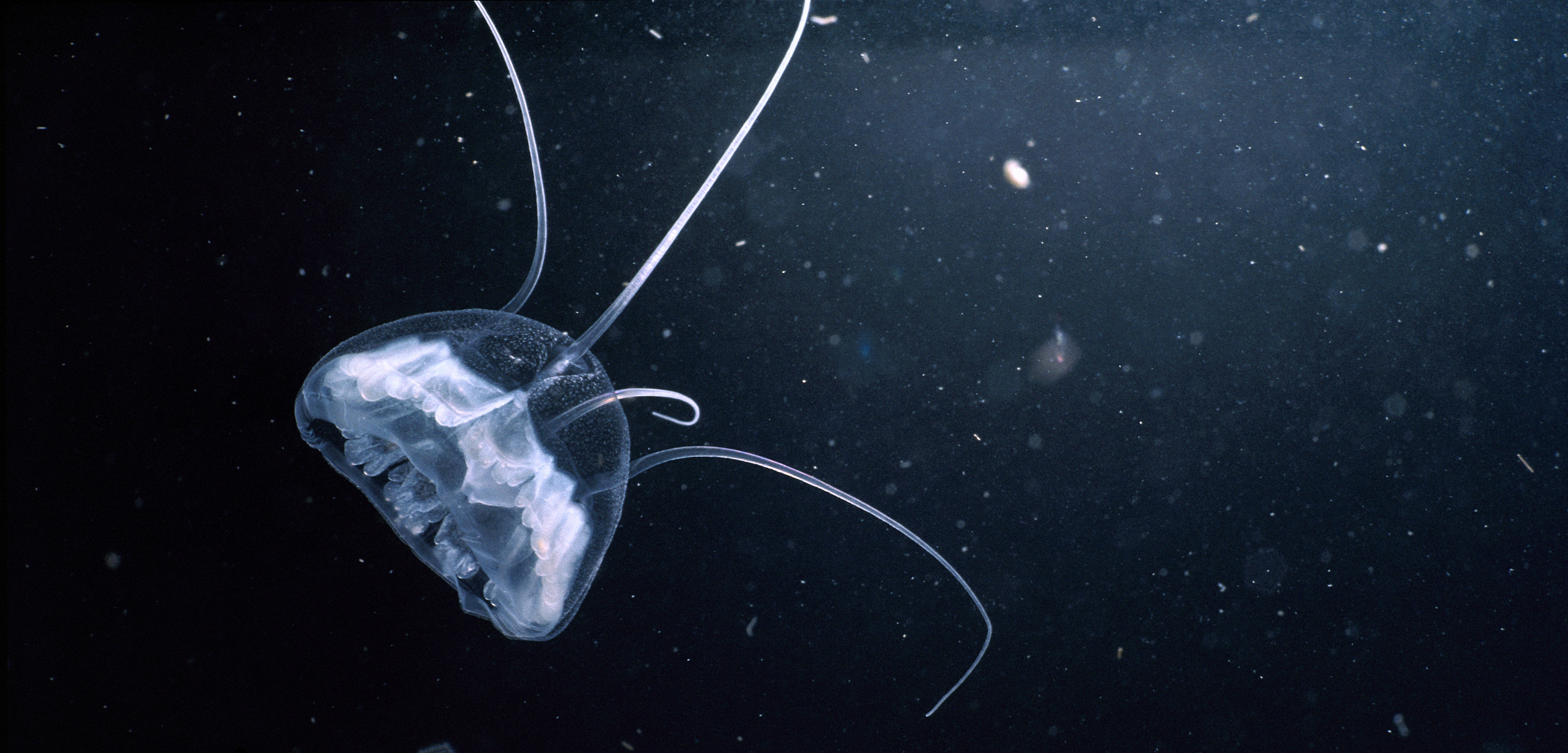Why Scientists Should Do It in the Dark
Sample zooplankton, that is.
Article body copy
When biologists think of contamination, bacteria or dirt might come to mind. But a new study has illuminated a different sort of contamination that’s been polluting data from Arctic seas: the artificial light that shines from research vessels.
According to a new study, one kind of data in particular may be flawed: measurements of zooplankton taken during the Arctic winter. “Almost everything we have done over the years from the research vessel in the polar night has been done in a sort of cathedral of light that is driven down into the darkness,” says Jørgen Berge, a marine biologist at the Arctic University of Norway.
And since zooplankton are phototaxic—highly responsive to light—the ships’ lights change their behavior. “Light is the key environmental factor for these organisms,” Berge says.
Around the world, zooplankton migrate up and down in the water column throughout the day in the planet’s largest synchronized movement of biomass. During the day, they sink into the dark to avoid predators, then surface during the night to feed on phytoplankton and bits of detritus. Zooplankton underpin marine food webs, which means inaccurate population estimates could affect Arctic ecosystem models.
Ice keeps many vessels out of polar waters in the winter, but around Svalbard, where Berge works, the water typically remains open, so scientists can work year round. Here, many zooplankton are negatively phototaxic—they move away from light—so glaring artificial lights in the black Arctic night can skew sampling.
Using acoustic imaging, Berge detected zooplankton as deep as 80 meters fleeing laterally when they sensed light. He also caught them scattering up to 500 meters away in the surface layers of the sea. This means plankton tows and water samples taken from research ships in the Arctic night may have systematically found fewer, or different, zooplankton than normally would be there.
Russell Hopcroft, a marine biologist with the University of Alaska Fairbanks, says the study is useful for refining sampling methodologies. “All the data that we have right now probably had some light contamination,” he says. Hopcroft points out that we still don’t know what species are actually moving in response to the lights, so it’s hard to say how much, if at all, researchers will have to change their models of Arctic ecosystems. But Hopcroft thinks this study sets the stage for examining the effects of artificial light in other situations; for example, near permanently illuminated structures such as oil rigs.
Bergen’s next step is to quantify the effects of the light, and that means gathering data in the dark. His team has pioneered the Jetyak, an autonomous surface vehicle—essentially a kayak outfitted with a remote-controlled motor and scientific equipment—that needs no operator, no lights, and can travel several kilometers from the ship.
He also agrees with Hopcroft that scientists need to look at how artificial light has potentially impacted data from other dark environs in the ocean, such as deep-sea data gathered in the floodlights of a remotely operated vehicle or a submarine. “We have to be conscientious about what sort of light climate we are in when we try to study in a natural state environment,” he says.

